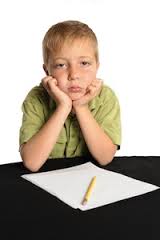BLOCK PLAY OVERVIEW
Block play is a central activity in many preschools because it is well known that block play is helpful to children in all areas of development (Wolfgang 2009). Block play has a beneficial impact on problem solving skills, initiative, and construction of knowledge. Ramp and marble play is an extension of block play and helps with these skills.

Block play helps with virtually every area of a child’s development. Through block play, children can learn literacy, math, science, and social skills. (Literacy can be encouraged by asking them to write labels for their structures.) It helps with emotional and social skills and physical development (MacDonald, 2001). Childrens’ growth in all domains is closely interrelated (Copple &Bredekamp, 2009) and block play naturally integrates these areas. Finally, children love to play with blocks.
BLOCK PLAY DEVELOPMENTAL SEQUENCE
Level Description of block use/construction
|
Non-Construction Use of Blocks Age 1-2 |
|
1 No Constructions: Child investigates physical properties of blocks by engaging in noise-making, transportation, motional and bodily contact manipulations. Child attempts to engage in social interactions using blocks. |
|
Linear Constructions Age 2 |
|
2 Vertical linear arrangement. Child piles or stacks block on top of each other. |
|
3 Horizontal linear arrangement. Child places blocks side by side or end to end in a row. |
|
Bideminsional/areal constructions Age 2-3 |
|
4 Vertical areal arrangement. Child constructs adjoining piles of blocks and/or superimposes row on row. |
|
5 Horizontal areal arrangement. Child combines rows of blocks in a horizontal area. |
|
Tridimensional constructions #6 Age 3 #7 and #8 Age 4 # 9 and higher Age 4 to 7 |
|
6 Solid tridimensional use of blocks. Child makes a flooring out of blocks and superimposes one or more additional layers of blocks. |
|
7 Enclosed vertical space. Child places two blocks parallel and spans the space between them with a block; forms an arch or bridge. |
|
8 Enclosed horizontal space. Child makes square-like shapes out of four or more blocks. |
|
9 Enclosed tridimensional space. Child roofs horizontal enclosure and creates a tridimensional enclosed space. |
|
10 Elaborations/combinations of many construction forms. Child uses various combinations of linear, bidimensional/areal and tridimensional constructions. |
REFERENCES
1. Copple, C., & Bredekamp, S. (2009). Developmentally appropriate practice. Washington, DC: NAEYC.
2.MacDonald, S. (2001). Block play: The complete guide to learning and playing with blocks. Maryland: Gryphon House.
3. Reifel, S. & Greenfield, P.M. (1982). Structural development in a symbolic medium: The representational use of block constructions. In G. Forman (Ed.), Action and thought: From sensorimotor schemes to symbolic operations, New York: Academic Press. 203-233.
4. Wolfgang, C. H., Stannard, L.L. & Jones, I.(2009). Block play performance among preschoolers as a predictor of later school achievement in mathematics. Journal of Research in Childhood Education, 15, no. 2: 173-180. Retrieved from http://dx.doi.org/10.1080/0256854019594958.



